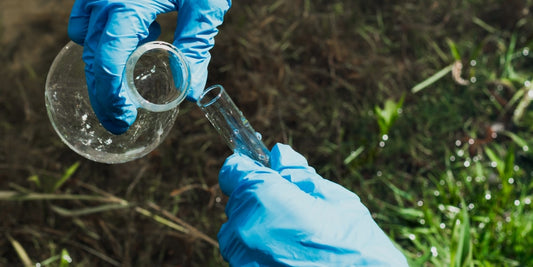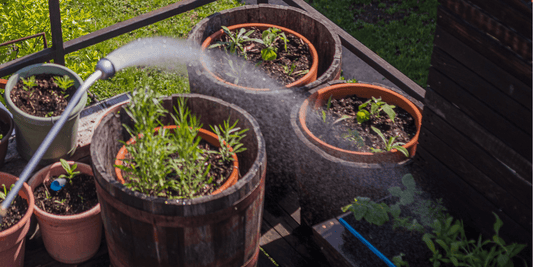Ensuring Safe Water: The Importance of Water Testing
Share
Water is a fundamental resource essential for life, and ensuring its safety is paramount for public health. One crucial aspect of this process is water testing. Whether it's from municipal supplies, private wells, or natural sources, regular testing is essential to identify potential contaminants and ensure water quality meets safety standards.
Why Water Testing Matters:
Health Protection: Contaminated water can pose significant health risks, including gastrointestinal illnesses, reproductive problems, and even chronic diseases. By regularly testing water, potential contaminants such as bacteria, heavy metals, pesticides, and chemicals can be detected early, preventing health issues.
Legal Compliance: Many regions have regulations and standards set by health authorities or environmental agencies to ensure safe drinking water. Compliance with these regulations is mandatory for public utilities, businesses, and industries. Water testing is the primary means of demonstrating compliance and avoiding legal repercussions.
Environmental Conservation: Monitoring water quality extends beyond human health; it also impacts aquatic ecosystems. Contaminated water can harm aquatic life, disrupt ecosystems, and degrade natural habitats. Regular testing helps in identifying pollutants, preventing environmental degradation, and supporting conservation efforts.
Infrastructure Maintenance: Water testing also aids in the maintenance of water treatment and distribution systems. By identifying issues such as corrosion, mineral build-up, or leaks, proactive measures can be taken to maintain infrastructure integrity and prevent costly repairs.
Types of Water Testing:
Microbiological Testing: This involves checking for bacteria, viruses, and other microorganisms. Common tests include total coliforms, E. coli, and faecal coliforms, which indicate faecal contamination.
Chemical Testing: Chemical analysis includes testing for various substances such as heavy metals (lead, arsenic, mercury), nitrates, pesticides, and volatile organic compounds (VOCs). These contaminants can originate from industrial runoff, agricultural activities, or household products.
Physical Testing: Physical parameters such as pH, turbidity, temperature, and conductivity are measured to assess water quality. These factors can influence the water's taste, appearance, and suitability for different uses.
The Testing Process:
Water testing typically involves collecting samples from various points in the distribution system or directly from the water source. These samples are then transported to certified laboratories for analysis. The testing methods employed vary depending on the parameters being measured and the desired level of accuracy.
Taking Action Based on Results:
Upon receiving test results, appropriate actions must be taken based on the findings. If contaminants are detected, steps such as implementing water treatment measures, issuing advisories, or repairing infrastructure may be necessary to mitigate risks and ensure water safety.
Why Water Testing Matters:
Health Protection: Contaminated water can pose significant health risks, including gastrointestinal illnesses, reproductive problems, and even chronic diseases. By regularly testing water, potential contaminants such as bacteria, heavy metals, pesticides, and chemicals can be detected early, preventing health issues.
Legal Compliance: Many regions have regulations and standards set by health authorities or environmental agencies to ensure safe drinking water. Compliance with these regulations is mandatory for public utilities, businesses, and industries. Water testing is the primary means of demonstrating compliance and avoiding legal repercussions.
Environmental Conservation: Monitoring water quality extends beyond human health; it also impacts aquatic ecosystems. Contaminated water can harm aquatic life, disrupt ecosystems, and degrade natural habitats. Regular testing helps in identifying pollutants, preventing environmental degradation, and supporting conservation efforts.
Infrastructure Maintenance: Water testing also aids in the maintenance of water treatment and distribution systems. By identifying issues such as corrosion, mineral build-up, or leaks, proactive measures can be taken to maintain infrastructure integrity and prevent costly repairs.
Types of Water Testing:
Microbiological Testing: This involves checking for bacteria, viruses, and other microorganisms. Common tests include total coliforms, E. coli, and faecal coliforms, which indicate faecal contamination.
Chemical Testing: Chemical analysis includes testing for various substances such as heavy metals (lead, arsenic, mercury), nitrates, pesticides, and volatile organic compounds (VOCs). These contaminants can originate from industrial runoff, agricultural activities, or household products.
Physical Testing: Physical parameters such as pH, turbidity, temperature, and conductivity are measured to assess water quality. These factors can influence the water's taste, appearance, and suitability for different uses.
The Testing Process:
Water testing typically involves collecting samples from various points in the distribution system or directly from the water source. These samples are then transported to certified laboratories for analysis. The testing methods employed vary depending on the parameters being measured and the desired level of accuracy.
Taking Action Based on Results:
Upon receiving test results, appropriate actions must be taken based on the findings. If contaminants are detected, steps such as implementing water treatment measures, issuing advisories, or repairing infrastructure may be necessary to mitigate risks and ensure water safety.



